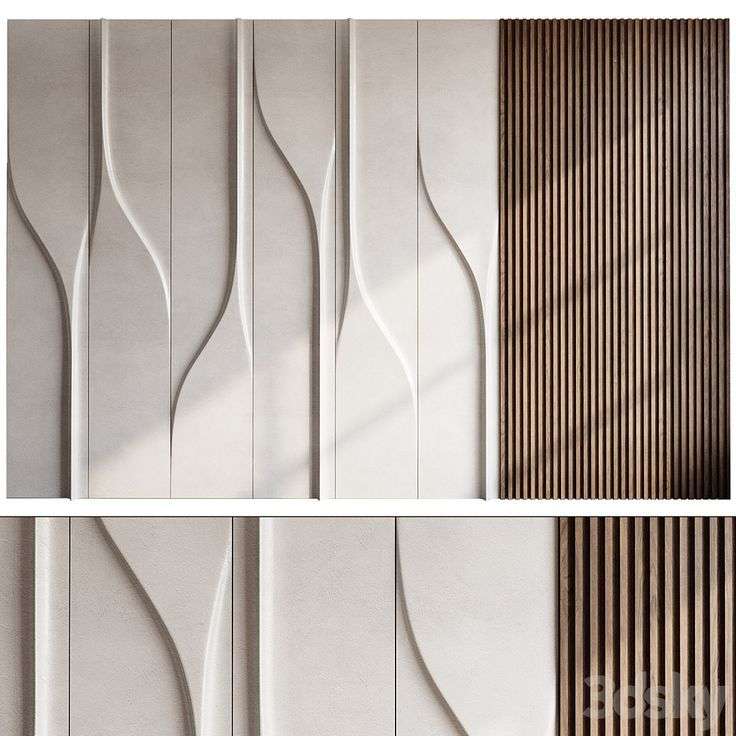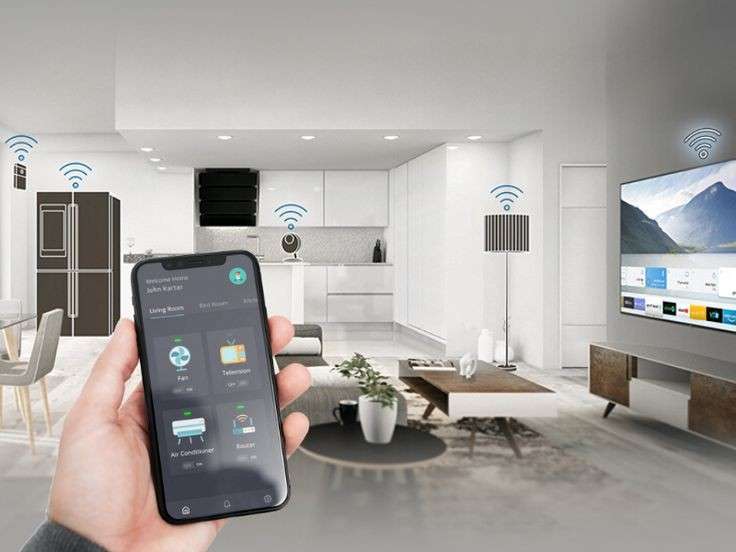At Scale & Structure, we understand that interior design is not just about aesthetics—it’s about creating spaces that influence the way people feel, think, and behave. The psychology of space is a fascinating field that explores how our environments affect our moods, productivity, and overall well-being. From the colors on the walls to the layout of furniture, every design decision plays a role in shaping our experiences and interactions. In this blog post, we’ll dive into the psychology of space and how thoughtful design can have a profound impact on behavior, emotions, and relationships.

1. The Influence of Color on Mood and Emotions
Color is one of the most powerful tools in design because it has the ability to evoke strong emotional responses. Different colors have been shown to influence our mood and even our behavior, making color choice an essential element in creating the right atmosphere for a space. For example:
- Warm colors like red, orange, and yellow are stimulating and can create a sense of energy and excitement. These colors are great for social spaces like dining rooms or living rooms where conversation and activity are encouraged.
- Cool colors such as blue, green, and purple tend to have a calming effect, promoting relaxation and focus. These colors are ideal for bedrooms or offices where concentration and tranquility are important.
- Neutral tones like gray, beige, and white are often used to create a sense of balance and serenity. These colors can be used in almost any room but are particularly effective in spaces that require flexibility and adaptability.
At Scale & Structure, we carefully select color palettes based on the intended function of each space, ensuring that the emotional impact aligns with the needs of our clients.
2. The Power of Light: Natural vs. Artificial Lighting
Lighting is another critical element in shaping behavior and mood. Natural light is known to have a positive effect on mental health, improving mood and boosting energy levels. On the other hand, artificial lighting—especially harsh fluorescent lights—can contribute to feelings of stress or fatigue.
- Natural light encourages a sense of openness and connection to the outside world. It has been shown to improve productivity, reduce stress, and enhance creativity. In spaces like home offices, kitchens, and living rooms, maximizing natural light through large windows, skylights, or glass doors can create a more uplifting environment.
- Artificial lighting can be used strategically to set the mood and highlight specific areas of a room. For instance, soft, warm lighting in the living room can create a cozy, intimate atmosphere, while bright, cool lighting in workspaces promotes focus and concentration.
Incorporating both types of lighting thoughtfully is essential to create a well-rounded, balanced environment. At Scale & Structure, we prioritize natural light wherever possible, while also offering tailored artificial lighting solutions to enhance the functionality and ambiance of each space.
3. Spatial Layout: How Arrangement Affects Interaction and Flow
The layout of a space has a significant impact on how people move through it and interact with one another. A well-designed layout can encourage positive interactions and increase the functionality of the space, while a poorly arranged layout can lead to feelings of discomfort or frustration.
- Open floor plans promote social interaction and connection. In spaces like living rooms or kitchens, an open layout allows people to move freely and engage with others, creating a sense of openness and inclusivity.
- Private, enclosed spaces are important for activities that require focus, such as working or relaxing. Bedrooms, offices, and reading nooks benefit from layouts that allow for privacy and personal space.
- Clear pathways and flow are essential for creating a sense of harmony in a space. Cluttered or cramped areas can lead to feelings of confinement or unease, while open, spacious pathways promote a sense of freedom and ease.
By designing thoughtful, efficient layouts, Scale & Structure ensures that spaces are functional, comfortable, and conducive to positive behavior.
4. The Role of Texture and Materials in Comfort and Well-being
The textures and materials used in a space can greatly affect how it feels. Soft, plush fabrics tend to create a feeling of warmth and comfort, while sleek, hard materials can evoke a sense of modernity or even coldness. The tactile experience of a space influences how we interact with it, so choosing the right materials is key.
- Soft textures like velvet, cotton, and wool create cozy, inviting environments. These materials are perfect for living rooms, bedrooms, or any space where relaxation and comfort are a priority.
- Natural materials such as wood, stone, and leather can bring a sense of warmth and groundedness to a room. These elements often evoke feelings of calm and connection to nature, making them ideal for spaces like kitchens, dining areas, and lounges.
- Sleek, polished materials like glass, steel, and marble can give a space a sophisticated, modern edge. While these materials are beautiful, they’re often best used in moderation to avoid creating a space that feels too sterile or uninviting.
At Scale & Structure, we blend a variety of textures and materials to create a harmonious environment that feels both stylish and comfortable, allowing clients to enjoy a balanced experience in every room.
5. Furniture and Proportions: How Scale Influences Behavior
The size, shape, and proportion of furniture can greatly impact how a space feels and how people use it. Large, bulky furniture in a small room can make the space feel cramped, while oversized furniture in a spacious room can create a sense of imbalance. Conversely, smaller furniture in a large room can make the space feel empty and underutilized.
- Comfortable, appropriately-sized furniture allows for easier movement and encourages social interaction. For instance, a well-arranged seating area with appropriately sized sofas and chairs will encourage people to gather and engage in conversation.
- Proportionality is key to creating a space that feels balanced. At Scale & Structure, we carefully select furniture and decor that complement the size of the room, creating a cohesive look that promotes both functionality and comfort.
6. Biophilic Design: Bringing Nature Indoors
Biophilic design is an approach that integrates elements of nature into the built environment. Research has shown that exposure to natural elements, such as plants, water features, and natural textures, can reduce stress, improve mood, and increase overall well-being.
- Plants and greenery have a calming effect and can help purify the air, creating a healthier and more relaxing space. In homes, adding indoor plants to living rooms, kitchens, or bathrooms can have both aesthetic and health benefits.
- Natural elements like wood paneling, stone features, or water elements like fountains can evoke a sense of tranquility and connection to nature, even in urban environments.
At Scale & Structure, we incorporate biophilic design principles into our projects by integrating natural materials and greenery into every room. This not only enhances the visual appeal of a space but also promotes a more harmonious and healthy living environment.
7. The Social Impact of Space: How Design Affects Interaction and Community
The design of shared spaces, such as living rooms, dining areas, and kitchens, plays a vital role in fostering social interaction and building community. A well-designed social space encourages family gatherings, conversations, and collaborative activities, while a poorly designed space can feel isolating or uncomfortable.
- Gathering areas should be designed to foster interaction. For example, arranging seating in a circle or U-shape allows people to easily engage with each other, making socializing more natural.
- Open kitchens are a great example of how design can encourage communal activity. A kitchen that opens into the living or dining room creates a central hub for the home, where people can gather, cook, and share meals together.
By thoughtfully designing social spaces, Scale & Structure helps clients create homes where relationships and connections are nurtured.
8. Conclusion: The Power of Design in Shaping Behavior
The psychology of space is a powerful tool for creating environments that influence our behavior and well-being. Every design decision—whether it’s the color of the walls, the layout of the furniture, or the texture of the materials—has the potential to affect how we feel, think, and interact with the world around us. At Scale & Structure, we take a holistic approach to interior design, ensuring that each space we create is not only beautiful but also supportive of our clients’ emotional and behavioral needs.
If you’re ready to create a space that truly reflects your personality and enhances your well-being, get in touch with Scale & Structure. Our team of experts will work with you to design a home that fosters comfort, productivity, and joy.



